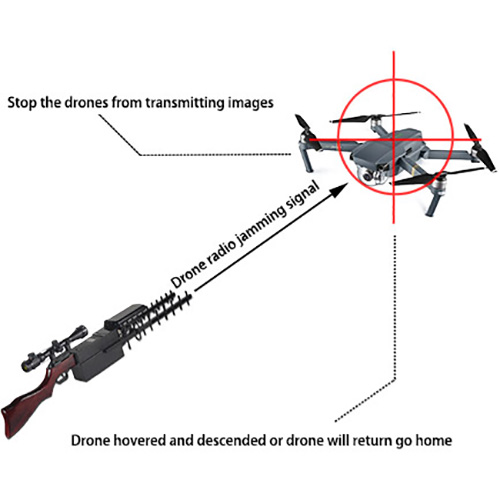In recent years, with the continuous increase in the number of drone users and the rise of the drone industry, chaos such as black fly break-ins, aerial photography peeping, and falling accidents have occurred from time to time. The use and management of drones have become imminent. . In order to avoid serious harm caused by black flying drones, it is necessary to supervise and counteract low, slow and small drones.
At present, there are two main methods for the supervision and countermeasures of drones. One is administrative supervision, including laws and regulations promulgated by the government for the prevention of black flying drones; the other is technical prevention. Using drone jammer and other equipment.
Supervision and Countermeasures of Drones - Administrative Supervision
All over the world are deeply infested by black flying drones, and in order to solve the problems caused by black flying drones, governments of various countries have also proposed a lot of solutions. For example, in order to strengthen the management of drones, Japan promulgated and implemented a new Aviation Law at the end of last year, which imposed strict restrictions on the areas where drones can be used.
Technical Prevention - Using Drone Jammers
After talking about the administrative supervision of low, slow and small drones, let's talk about technical prevention in detail. The low, slow and small drones use frequency bands such as ISM2.4 and ISM5.8, as well as the assisted positioning of the GNSS navigation system. In the process of use, these frequency bands need to be used for communication and interaction. The technical prevention of low, slow and small drones is to use signal interference devices such as drone jammers to interfere with the communication between the drone and the remote control, causing the drone to lose its signal and make a return/descent/hover. and other actions, and can no longer perform other harmful actions.
Using technology to prevent low, slow and small drones, the interference distance and interference frequency band have become the primary considerations.

Now the Civil Aviation Administration has issued the requirements for the real-name registration of low, slow and small drones. This is just the beginning. In the future, more stringent regulatory measures will be required, and even black flying will be punished, so as to truly deter the Criminals. In the face of the current situation, real-name registration has just been introduced. The supervision and countermeasures against low, slow and small drones, especially in terms of technical prevention, require the attention of relevant agencies and units. It is necessary to use drone jammers, which technically form a no-fly zone to prevent possible hazards.





